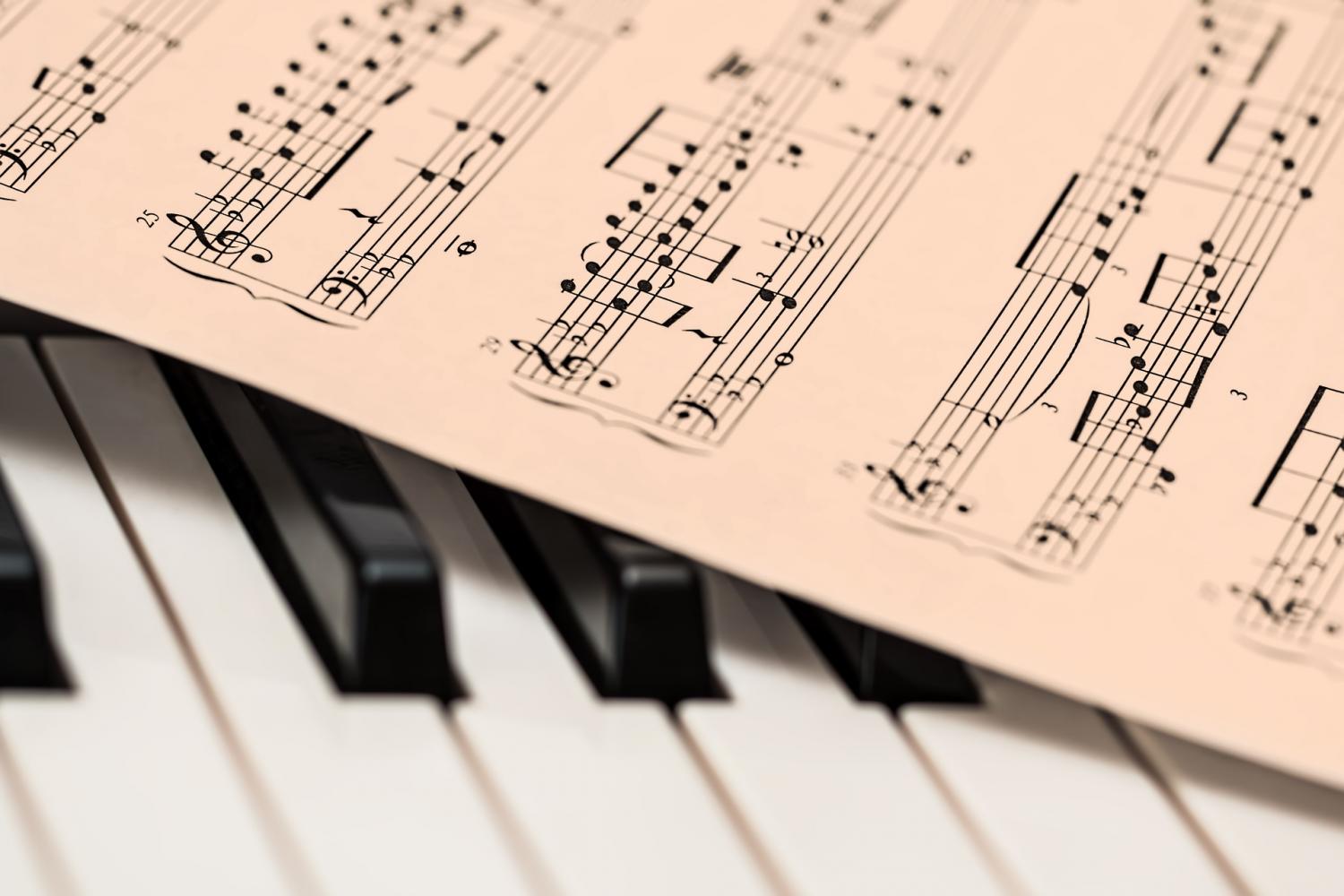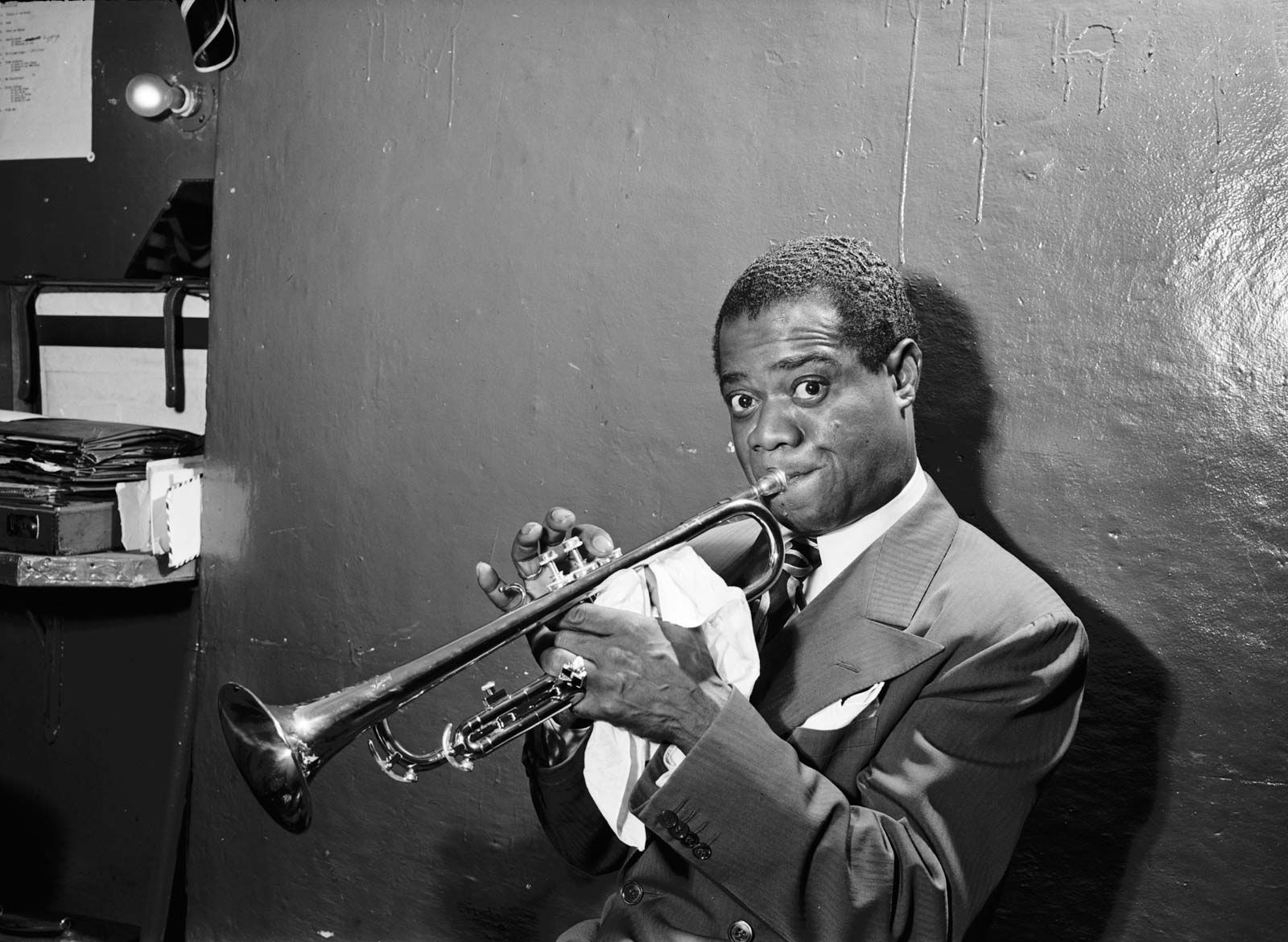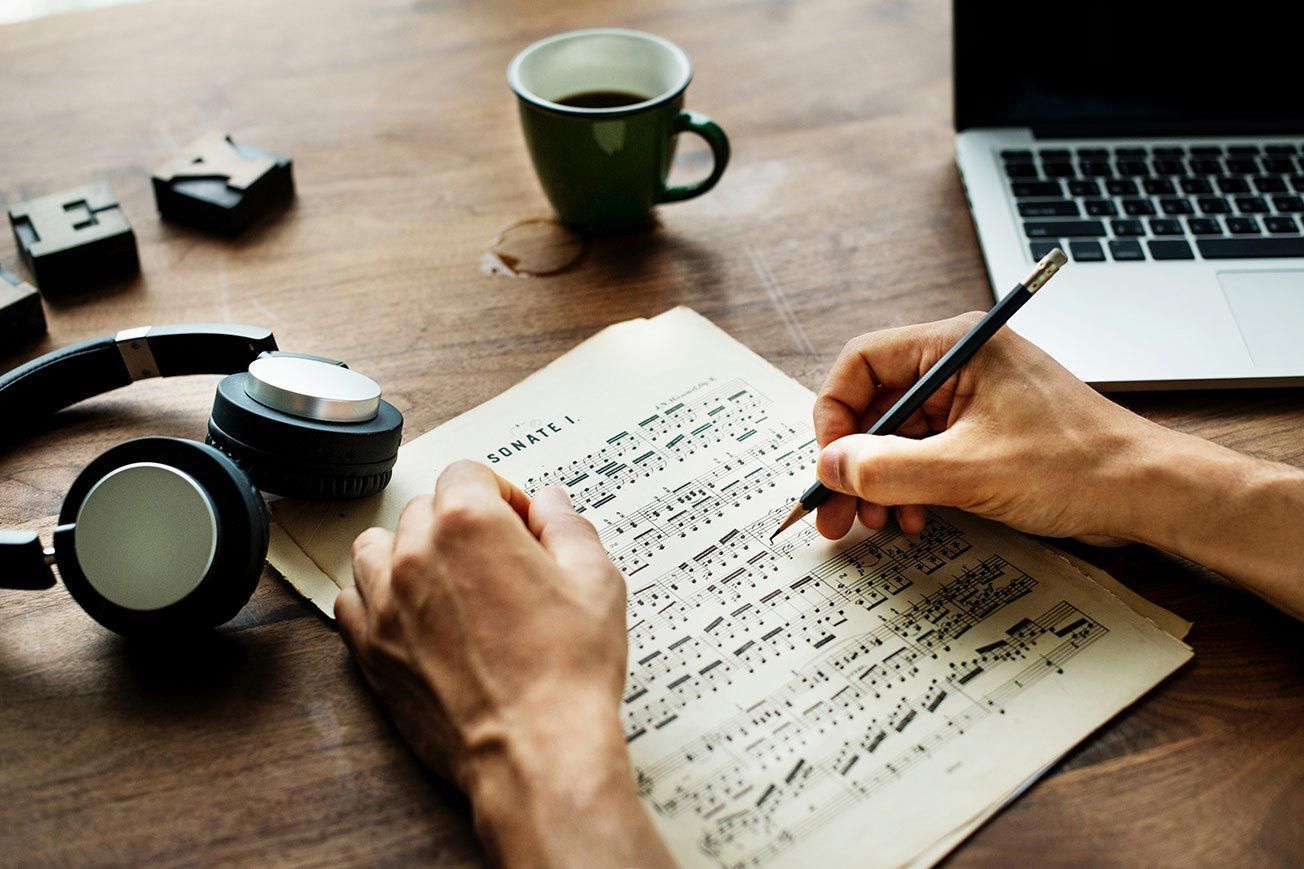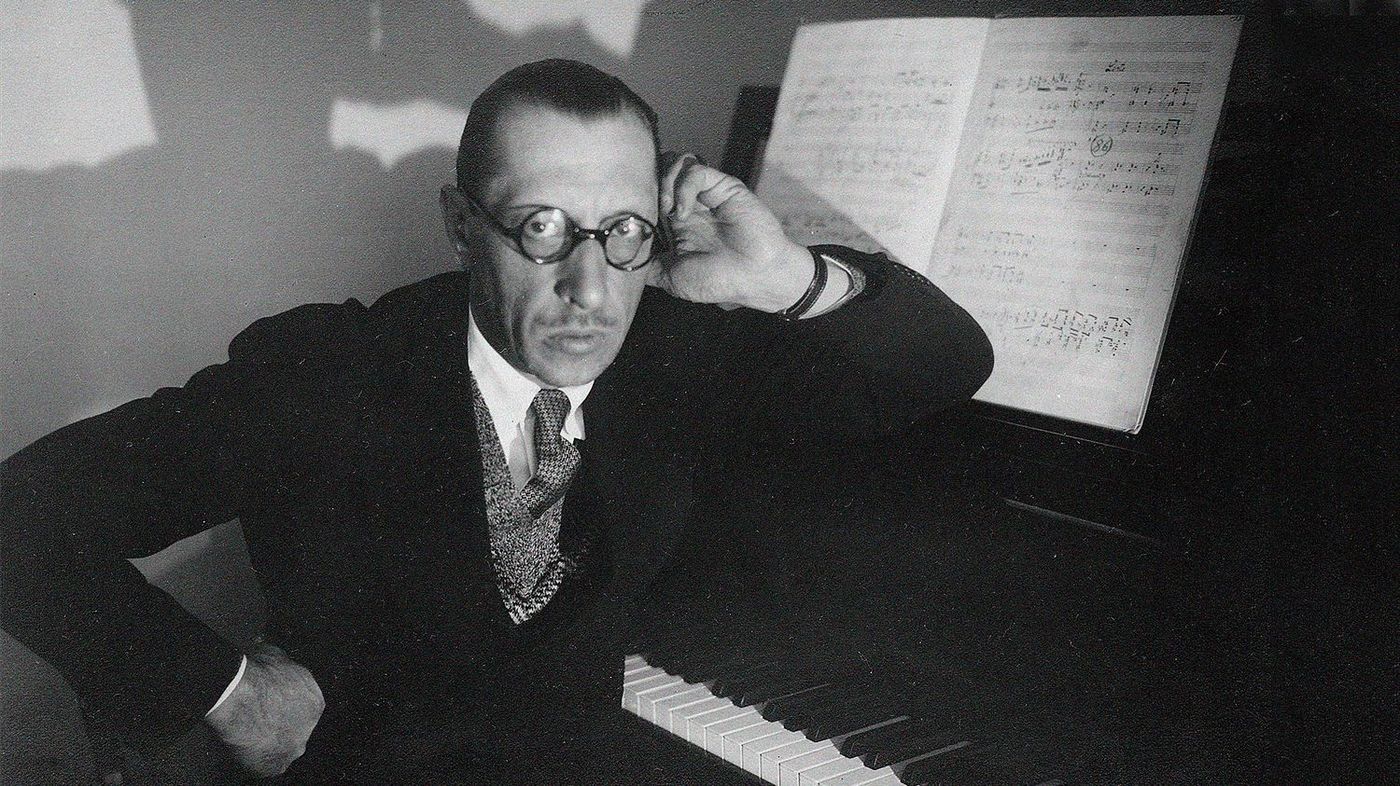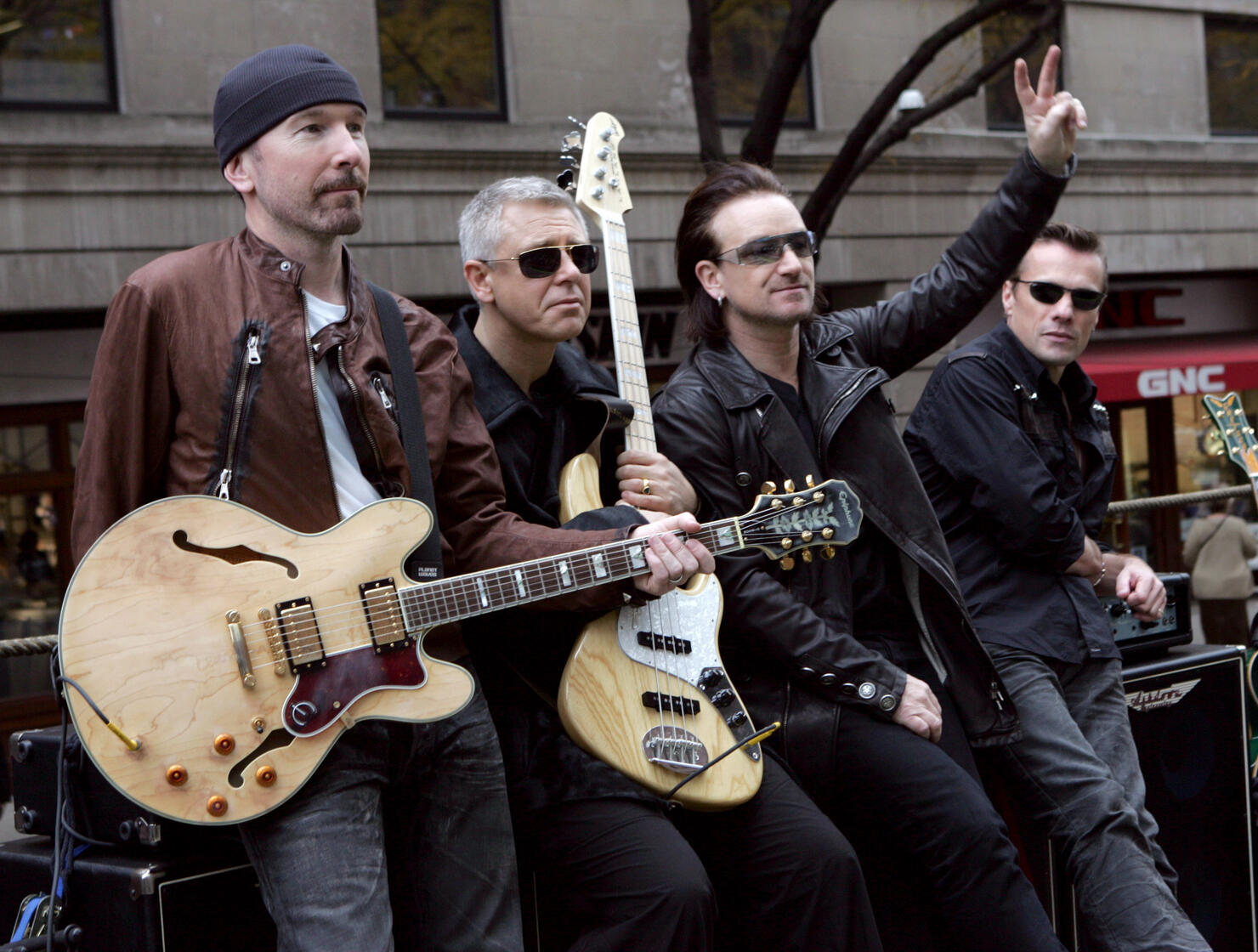Home>Events & Info>Music History>What Was The Music History In The 1861 Through The 1865
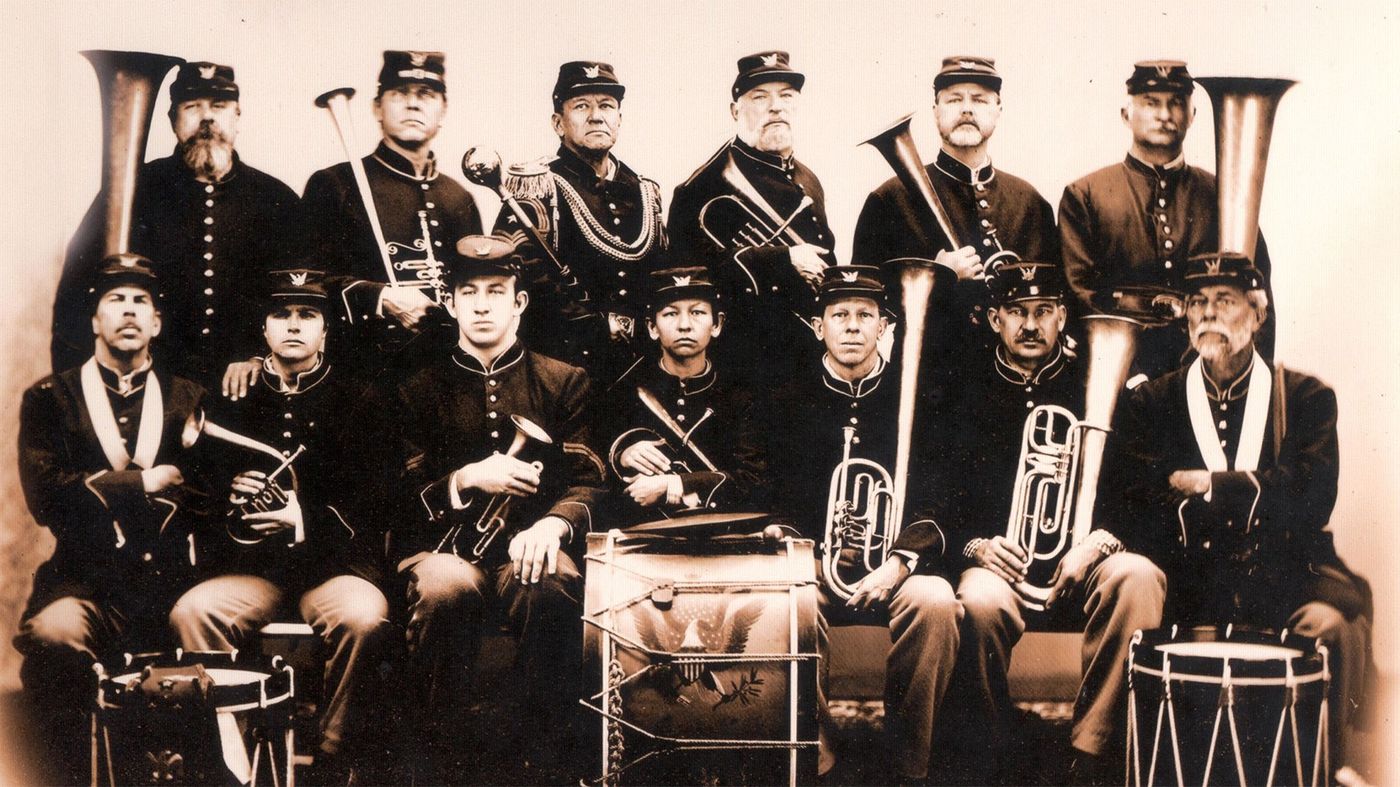

Music History
What Was The Music History In The 1861 Through The 1865
Modified: January 22, 2024
Explore the rich music history from 1861 to 1865, a time of cultural upheaval and artistic innovation. Discover the transformative impact of music during this period.
(Many of the links in this article redirect to a specific reviewed product. Your purchase of these products through affiliate links helps to generate commission for AudioLover.com, at no extra cost. Learn more)
Table of Contents
Introduction
The years 1861 through 1865 marked a pivotal period in American history as the United States grappled with the turmoil of the Civil War. This era not only witnessed significant changes in the political and social landscape but also had a profound impact on the development of music. Music has always held a special place in society, reflecting the spirit and emotions of the times, and the music of the Civil War era was no exception.
During this historical period, music played a crucial role in bolstering morale, conveying sentiments of both patriotism and mourning, and providing a source of solace and unity for both soldiers and civilians. From catchy marching tunes to heartfelt ballads, the songs of the Civil War captured the tumultuous nature of the times and left a lasting musical legacy.
In this article, we will explore the musical influences during the Civil War, the popular music of the 1860s, the significance of marching and battle songs, the emotional songs of sentiment and mourning, the musical instruments used during this era, and the impact of the Civil War on music education. Through this exploration, we will gain a deeper understanding of how music played a role in shaping the cultural and emotional landscape of the time.
Join us on a journey through the melodies and rhythms of the 1860s as we delve into the fascinating music history of the Civil War era.
Musical Influences during the Civil War
The music of the Civil War era was influenced by a variety of factors, encompassing both the cultural trends of the time and the experiences of those directly involved in the conflict. One of the primary influences was the rich musical heritage of the United States, which encompassed a blend of European traditions, African-American spirituals, and regional folk music.
The popularity of minstrel shows, a form of entertainment that often featured caricatures of African Americans, had a significant impact on the music of the era. Many of the songs from minstrelsy, such as “Dixie” and “Camptown Races,” became widely popular and were performed by both Union and Confederate soldiers.
Additionally, with technological advancements in printing and distribution, sheet music became more accessible to the general public. This led to the rapid dissemination of popular songs, including wartime tunes. Musicians and songwriters would often put new lyrics to familiar melodies, creating a sense of familiarity and allowing people to easily sing along.
Another influential factor was the military itself. The military bands of both the Union and Confederate armies played a significant role in boosting morale and providing a sense of unity among the troops. These bands often incorporated brass and percussion instruments, creating powerful and stirring sounds that resonated on the battlefield.
Furthermore, the experiences and emotions of soldiers and civilians alike influenced the music of the time. Soldiers would gather around campfires and sing songs that expressed their longing for home, their pride in their cause, and their fears of battle. Civilian communities, too, found solace in music, using it as a means of expressing their support for their loved ones on the front lines.
Overall, the musical influences during the Civil War encompassed a broad spectrum, ranging from pre-existing American music traditions to the specific experiences and emotions of those affected by the conflict. This unique combination laid the foundation for the memorable and influential songs that emerged during this turbulent period.
Popular Music in the 1860s
The 1860s witnessed the rise of influential and widely recognized songs that reflected the sentiments and experiences of the era. These songs not only entertained but also played a significant role in shaping the cultural and political climate of the time.
One of the most iconic songs of this period was “Dixie.” Originally written in 1859 by Daniel Decatur Emmett, “Dixie” became immensely popular in the South and was later adopted as a de facto anthem by the Confederacy. Its catchy melody and lyrics evoked a sense of Southern pride and nostalgia for a way of life that was rapidly changing due to the war.
Another popular song of the time was “Battle Hymn of the Republic,” written by Julia Ward Howe in 1861. This song became associated with the Union cause and served as a rallying cry for those fighting to preserve the Union and abolish slavery. Its powerful lyrics and stirring melody cemented its place as a symbol of hope and righteousness.
Other notable songs of the era included “When Johnny Comes Marching Home,” a rousing tune that expressed anticipation and joy at the return of soldiers from war, and “Aura Lee,” a sentimental ballad that gained popularity among both Union and Confederate soldiers and became the basis for the famous Elvis Presley song “Love Me Tender.”
Popular music in the 1860s was not limited to patriotic songs and ballads; it also encompassed songs of humor and satire. Artists such as Stephen Foster, known as the “Father of American Music,” composed light-hearted and catchy tunes that provided entertainment and escape from the harsh realities of war. Some of his notable compositions included “Oh! Susanna” and “Camptown Races.”
During this time, music was not only consumed through live performances but also through the widespread distribution of sheet music. The ability to recreate the melodies on personal instruments or by gathering around the piano at home enabled families and communities to share in the musical experience.
Overall, the popular music of the 1860s reflected the diverse range of emotions and experiences felt during the Civil War. From patriotic anthems to lighthearted tunes, these songs provided comfort, inspiration, and a sense of belonging during a time of immense upheaval.
Marching and Battle Songs
Marching and battle songs played a crucial role during the Civil War, serving to boost morale, instill a sense of unity, and provide soldiers with a cadence to march to. These songs were designed to evoke a sense of strength, patriotism, and determination among the troops.
One of the most widely recognized marching songs of the Civil War era was “The Battle Cry of Freedom.” Written by George F. Root in 1862, this song quickly became an anthem for the Union cause. Its uplifting melody and powerful lyrics, which spoke of fighting for freedom and liberty, resonated with soldiers and civilians alike.
Another popular marching song was “John Brown’s Body,” which originated as a hymn in the 1850s but was transformed into a rallying cry during the war. It celebrated the abolitionist John Brown and his efforts to end slavery, and it was often sung by Union soldiers as they marched into battle.
“Tramp! Tramp! Tramp!” was another notable marching song that gained popularity during the war. This song depicted the harsh experiences of prisoners of war and conveyed a message of endurance and hope in the face of adversity. Its catchy melody and relatable lyrics made it a favorite among soldiers on both sides of the conflict.
Marching songs not only served a practical purpose but also helped to maintain discipline and order on the battlefield. The rhythmic cadence of these songs helped soldiers march in unison, maintaining a steady pace and bolstering their cohesion as a unit. This sense of unity and purpose was vital in the midst of the chaos and uncertainty of war.
Moreover, battle songs were played during actual combat to boost morale and intimidate the enemy. These songs were often accompanied by the booming sound of drums and the blaring of bugles, creating a sense of both anticipation and urgency among the troops. Songs like “The Girl I Left Behind Me” and “Yankee Doodle” were commonly heard on the battlefield, providing a sense of familiarity and camaraderie amidst the chaos.
From the thunderous strains of marching songs to the stirring melodies of battle hymns, the music of the Civil War played an integral role in boosting the spirits and determination of soldiers on both sides. It provided a soundtrack to their fight for freedom, honor, and victory.
Songs of Sentiment and Mourning
The Civil War was a time of immense loss and mourning, as families and communities grappled with the devastating consequences of the conflict. Songs of sentiment and mourning emerged as a means of expressing grief, longing, and remembrance for loved ones lost.
One of the most poignant songs of this genre was “Tenting Tonight on the Old Camp Ground.” Written by Walter Kittredge in 1863, this song captured the longing and nostalgia felt by soldiers as they yearned for the comforts and companionship of home. Its haunting melody and mournful lyrics struck a chord with those separated from their families and provided solace during the darkest hours of war.
“The Vacant Chair” was another deeply emotional song that became popular during the Civil War. Written by Henry S. Washburn in 1861, it reflected on the empty spaces left at the family table, symbolizing the absence of fallen soldiers. It served as a reminder of the sacrifices made by these brave men and evoked a powerful sense of loss and longing.
Furthermore, “Lorena” was a sentimental ballad that captivated listeners with its bittersweet melody. Composed by Joseph Webster in 1856, the song gained popularity during the war and touched the hearts of both soldiers and civilians. Its tender lyrics spoke of love and yearning, offering a temporary respite from the harsh realities of battle.
As the war progressed, songs of mourning began to emerge, paying tribute to fallen soldiers and expressing the collective grief of the nation. Songs like “Just Before the Battle, Mother” and “Kathleen Mavourneen” conveyed the anguish and heartbreak experienced by families and friends of servicemen.
What made these songs of sentiment and mourning particularly impactful was their ability to evoke raw emotions and provide a cathartic outlet for grief. They were often performed at memorial services and gatherings, offering a communal space for individuals to share their sorrows and find solace in the presence of others who understood their pain.
The music of sentiment and mourning not only helped individuals cope with their loss, but it also served as a testament to the human cost of war. By memorializing the fallen and invoking a sense of collective mourning, these songs fostered a sense of unity and empathy among those affected by the conflict.
The power of these songs lies in their ability to evoke strong emotions and provide a means of catharsis for individuals and communities affected by loss. They serve as a reminder of the human toll of war and the enduring impact it has on those left behind.
Musical Instruments of the Civil War Era
The Civil War era witnessed a diverse array of musical instruments that played a crucial role in shaping the soundscape of the time. From brass bands to portable instruments carried by soldiers, these musical tools added depth, emotion, and rhythm to the music of the era.
One of the most prominent musical instrument families during this time was brass instruments. Brass bands, comprised of trumpets, trombones, cornets, and tubas, became a staple in both Union and Confederate military units. These instruments were powerful and capable of producing loud, resonant sounds that could carry over long distances on the battlefield, boosting morale and signaling orders.
The woodwind family also played a significant role in Civil War-era music. Instruments such as the flute, clarinet, and oboe were commonly featured in military bands and provided melodic accompaniment to the brass section. The haunting tunes of the fife, a small woodwind instrument, were particularly associated with the marching and drill routines of soldiers.
Percussion instruments were integral to the rhythmic foundation of Civil War music. Drums, both snare drums and bass drums, provided a steady beat for marching and were essential in maintaining formations and coordinating movement on the battlefield. Bugles, another type of percussion instrument, were used for signaling commands and communicating during battles.
String instruments were also present during this time, though they were less commonly used on the battlefield due to their limited volume. However, in non-military settings, instruments like the guitar, violin, and banjo were beloved by civilians and soldiers alike. These instruments provided a means of entertainment and comfort during quieter moments away from the front lines.
In addition to the more traditional instruments, there were also unique instruments specifically designed for military use. For example, the harmonica, a small and portable instrument, became popular among soldiers due to its convenient size and the ease with which it could be carried in their pockets or knapsacks. Soldiers would often play the harmonica to pass the time, boost morale, and find solace during challenging moments.
Overall, the musical instruments of the Civil War era encompassed a wide range of sounds and capabilities. From the powerful brass bands to the delicate melodies of woodwinds and strings, each instrument played a significant role in shaping the musical landscape of the time. And while many of these instruments were used in a military context, they also brought comfort, entertainment, and unity to soldiers and civilians alike during a turbulent period in American history.
Impact of the Civil War on Music Education
The Civil War had a profound impact on music education in the United States, shaping the development and accessibility of musical instruction for generations to come. It brought about changes in both the formal and informal aspects of music education and paved the way for the growth and recognition of music as an essential part of education.
During the war, music became an integral part of military training and organization. Both Union and Confederate armies recognized the value of music in boosting morale, maintaining discipline, and conveying orders on the battlefield. As a result, music education became a vital aspect of military training, with soldiers being taught to play instruments, read music, and perform in marching and military bands.
Furthermore, the war created a heightened awareness of the importance of music in providing solace and a sense of community for soldiers on the front lines. Civilians back home recognized the value of music education in fostering patriotism and unity, and as such, schools and communities began to place a greater emphasis on music training.
As the war drew to a close, the need for music instructors and educators increased. Organizations and associations dedicated to promoting and improving music education were established, seeking to ensure that students had access to quality instruction and resources. This led to the expansion of music programs in schools and the professionalization of music teaching.
The war also had a significant impact on the accessibility of music education. Prior to the conflict, music instruction was often reserved for the wealthy elite and was limited to private lessons or music academies. However, during and after the war, music education became more accessible to a wider range of individuals. The establishment of public schools and the inclusion of music in their curriculum paved the way for music education to reach a broader audience.
Additionally, the war spurred the creation of new music materials and instructional resources. Composers and publishers recognized the need for music that reflected the experiences of the time. They composed patriotic songs, marching tunes, and sentimental ballads that could be used in educational settings to teach both musical concepts and the history and significance of the war.
Overall, the impact of the Civil War on music education was far-reaching. It elevated the status of music as an integral part of education, increased the accessibility of music instruction, and led to the professionalization of music teaching. The war sparked a renewed recognition of the power of music to educate, uplift, and unite individuals, leaving a lasting legacy on music education in the United States.
Conclusion
The music history of the Civil War era is a testament to the power of music as a means of communication, expression, and unity. From the influences of popular songs to the significance of marching and battle songs, the music of the time reflected the emotions, experiences, and aspirations of a nation torn apart by conflict.
Marching and battle songs brought rhythm and inspiration to soldiers on the battlefield, fostering a sense of camaraderie and determination. Songs of sentiment and mourning provided solace and a means of expression for grieving families and communities, capturing the profound impact of loss and sacrifice.
The musical instruments of the Civil War era played a crucial role in shaping the soundscape of the time, from the powerful brass and percussion instruments to the soulful melodies of woodwinds and strings. These instruments added depth and emotion to the music, amplifying the impact of the songs and providing a means of entertainment and escape in the midst of turmoil.
Furthermore, the Civil War had a lasting impact on music education, with a heightened recognition of music’s role in fostering unity and patriotism. The war brought about changes in formal and informal music education, making music more accessible and recognized as an essential part of education.
In conclusion, the music history of the 1861 through 1865 is a reflection of the times – a blend of patriotism, longing, grief, and resilience. The songs and music from this era continue to resonate, reminding us of the power of music to connect us, express our emotions, and provide solace during the most trying of times.


